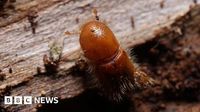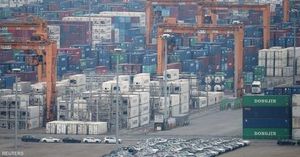It’s a battle playing out quietly in the forests of southeast England, but the stakes could hardly be higher: the United Kingdom is racing to contain the spread of the spruce bark beetle, a tiny insect that’s already devastated millions of trees across Europe. At just 5mm long—smaller than a fingernail—the beetle, known scientifically as Ips typographus, has been labelled “public enemy number one” by government scientists and conservationists alike. Now, with the help of drones, sniffer dogs, and a surprising bit of nuclear fallout modeling, the UK is fighting back—and, so far, winning.
According to BBC News, the threat first arrived on British shores in 2018, not via the usual suspects of imported timber or wood products, but carried by winds sweeping across the English Channel. Government border checks at ports failed to catch the beetle because, as Andrea Deol from the UK government's Forest Research put it, “All of the research we have done now has indicated they are being blown over from the continent on the wind.” The discovery of a breeding population in Kent was a wake-up call: the beetle was already here, and it was multiplying.
The beetle’s destructive power is immense. In Norway alone, the species has destroyed 100 million cubic metres of spruce trees over the past decade, according to Rothamsted Research. Sitka spruce, the main tree used for timber in the UK, covers some 725,000 hectares across the country—an area valued at approximately £2.9 billion per year in Great Britain. If the beetle were to gain a foothold, the economic and ecological consequences would be catastrophic. “If this beetle was allowed to get hold of that, the destructive potential means a vast amount of that is at risk,” Deol told the BBC.
So, what’s the plan? The government’s approach would look right at home in a high-tech thriller. Drones are launched to scan hundreds of hectares of woodland, searching for the telltale signs of infestation: as the beetle attacks, the upper canopy of the tree begins to die off, visible from the air. Once a potential hotspot is identified, entomologists—essentially insect detectives—head in on foot to inspect the trees up close. “They are looking for a needle in a haystack, sometimes looking for single beetles—to get hold of the pioneer species before they are allowed to establish,” Deol explained.
But drones and human experts aren’t the only tools in the arsenal. Sniffer dogs, trained to detect the pheromones released by the beetles and the smell of their frass (the polite term for insect poo), are deployed to large timber stacks and dense woodland, where visual inspection is nearly impossible. Early trials have been successful, and the dogs have become invaluable for quickly pinpointing contaminated areas, according to The Independent.
Meanwhile, bug traps equipped with cameras and artificial intelligence algorithms have been set up in strategic locations. These traps can now scan daily for Ips beetles, identifying them in real time using a model trained on over 20,000 images of beetles and debris. This is a major leap forward from the old system, where traps were checked manually just once a week. “We have [created] our own algorithm to identify the insects,” said Dr. Max Blake, head of tree health at Forest Research, as reported by BBC News.
Backing up these efforts is a bit of scientific ingenuity borrowed from an unlikely source: nuclear atmospheric dispersion modeling. Originally developed to predict the spread of nuclear fallout, this model has been adapted by researchers at the University of Cambridge and the Met Office to forecast where beetle populations might land next, depending on wind patterns and other factors. “So, [the model] was originally used to look at nuclear fallout and where the winds take it, instead we are using the model to look at how far Ips goes,” Dr. Blake explained.
All these efforts have paid off. The UK government claims to be the first country to have eradicated Ips typographus in controlled at-risk areas, specifically in the east and southeast of England. This is no small feat. In a single year, Deol’s team inspected 4,500 hectares of spruce—nearly 7,000 football pitches’ worth—on the public estate. “What we are doing is having a positive impact and it is vital that we continue to maintain that effort. If we let our guard down we know we have got those incursion risks year on year,” Deol told the BBC.
Yet the fight is far from over. Climate change is making the job harder. Wetter winters and drier summers are stressing trees, weakening their natural defenses. Healthy spruce trees can usually fend off a few beetles by producing resin to flush them out. But when drought or waterlogging sets in, the trees’ defenses crumble. “Their populations can build to a point where they can overcome the tree defences—there are millions, billions of beetles,” Dr. Blake said. With larger beetle populations on the continent, the risk of wind-borne incursions into the UK only increases.
Nick Phillips of The Woodland Trust, while supportive of the government’s work, worries about the collateral damage to ancient woodlands—some of the UK’s oldest and most biologically-rich forests. When a contaminated tree is found, it and its neighbors, sometimes centuries old, must be removed to stop the beetle’s spread. “We really want the government to maintain as much of the trees as they can, particularly the ones that aren't affected, and then also when the trees are removed, supporting landowners to take steps to restore what's there,” Phillips said. He argues that funding shouldn’t just focus on planting new trees, but also on supporting and restoring older woodlands, which are vital for biodiversity and carbon capture.
The government’s plant health risk register lists over 1,400 pests and diseases, but the spruce bark beetle stands out as the biggest threat. The experience of continental Europe, where forests have been decimated, serves as a stark warning. “Predominantly, the reason for that is global trade,” Phillips noted, “we're importing wood products, trees for planting, which does sometimes bring 'hitchhikers' in terms of pests and disease.” But, as the UK has learned, sometimes the most dangerous hitchhikers don’t even need a ride—they just catch the wind.
For now, the UK’s blend of old-fashioned fieldwork and cutting-edge technology has held the line. But with climate change and global trade keeping the risks ever-present, the battle to protect Britain’s forests is likely to continue for years to come. One thing’s certain: letting their guard down is not an option.




